Something special is happening in Wales. The country is using legislation to shift itself into a very different direction from England. It wants to be more sustainable. It wants to reduce its ‘ecological footprint’ to a level that’s fair compared to the rest of the planet’s population and resources.
Spearheading this approach is the notion of One Planet Development.
What is One Planet Development?
Through its Technical Advice Note 6 (TAN 6) and Planning Policy Wales (PPW) the Welsh Government sets out land use planning policies to support sustainable communities. Planning Policy Wales (2016) says:
4.5.11 Closely aligned to the commitments to tackling climate change is the Welsh Government’s approach to reducing the ecological footprint of Wales. Our Sustainable Development Scheme sets out an ambition for Wales to use its fair share of the Earth’s resources, where, within a generation, our ecological footprint is reduced to the global average availability of resources – 1.88 global hectares per person. The current footprint shows that, if everyone on the Earth lived as we do, we would use 2.7 planets worth of resources. Reducing Wales’ ecological footprint will require a large reduction in the total resources used to sustain our lifestyles. The policy and guidance set out here in PPW will make an important contribution to reducing our footprint, whilst delivering sustainable development and tackling climate change.
Section 4 of TAN 6 defines One Planet Developments (OPD) as being exemplars of sustainable development:
4.15.2 One Planet Developments may take a number of forms. They can either be single homes, co-operative communities or larger settlements. They may be located within or adjacent to existing settlements, or be situated in the open countryside.
In other words, anywhere.
However planning guidance exists only for OPD in the open countryside. The criteria include:
- An initial ecological footprint of 2.4 global hectares per person or less and clear potential to move towards 1.88 global hectare; the Welsh Government provides an Excel-based calculator on its website to help you work out your own footprint
- Buildings being zero carbon over their lifetime;
- Carbon analysis and improvement plan for the plot;
- Biodiversity and landscape improvement;
- A community impact improvement;
- Transport assessment and travel plan to minimise carbon impact of travel;
- Sustainable water supply;
- Zero waste (including biological waste – sewage treatment)
- 100% renewable energy.
- Over a reasonable length of time (no more than 5 years), to provide for the minimum needs of the inhabitants in terms of income, food, energy and waste assimilation from land-based employment.
No criteria of this nature have yet been determined for urban or peri-urban developments but something comparable is anticipated at a collective community level. I believe it is therefore urgently necessary for planning guidance to be set for making both new and existing settlements satisfy, collectively, the criteria to be measurably ‘one planet’ within a generation.

Meanwhile, I run courses on how to do this, based on my book, The One Planet Life, which is a kind of manual and ‘big book of everything’ for sustainable living.
The One Planet Council, of which I am a co-founder and patron, is also a great source of help, both on its website and Facebook page for anyone wanting to do this or find out more.
How to do it
Anyone wanting to pursue this life in Wales, in the open countryside, where one is not normally permitted to build a home, must satisfy the above criteria. In England, sometimes a Local Development Plan can have similar criteria, or an authority can use a Section 106 agreement to permit it, as with Hockerton Housing Project.
To prove their claim in Wales, applicants must submit a planning application containing a ‘management plan’ that sets out their plans to meet these criteria. This includes detailing the land-based businesses they will run to support themselves.
When you have secured planning permission you have five years to meet the criteria. You can also use the ‘one planet’ label on your products that has been developed for marketing purposes by the One Planet Council.

Measurable and provable
The great advantage of this approach, and its ‘unique selling point’, is that it is measurable and provable. There is no doubt that your life will be a little more sustainable. Many times you hear claims about the sustainability of lifestyles or products and developments, but there is no way of knowing how true they are.
Above: a screenshot of the Excel-based calculator. It uses your expenditure as a way of working out your ecological footprint (click to enlarge).
What is an ecological footprint?
The global population is now 7.5 bn. and is predicted to peak at 11.2 bn by 2100 (UN). But the ability of our lovely planet Earth to support life depends on us staying within a number of ‘planetary boundaries’. Humanity passed this ‘biocapacity’ limit way back in the early 1970s. Our collective footprint has been rising ever since:

As defined by the environmental charity WWF, there are nine ‘planetary boundaries’. Every couple of years WWF produces a brilliant survey called a ‘Living Planet Report’. The last one, in 2016, said that of these nine limits to growth, four have passed safe levels: climate change, biosphere integrity, biogeochemical flows and land-system change.

WWF says that humanity now needs the regenerative capacity of 1.6 Earths to provide goods and services we collectively use. But the per capita ecological footprint of high-income nations dwarfs low- and middle-income countries. What will happen if 11.2bn people want North America’s standard of living?
Ecological footprint is measured in ‘global hectares’. It divides the ‘biocapacity’ of land (supply) by human consumption levels (demand). The biocapacity is a measure of the pollution land can absorb and the services and resources it can provide. The demand is the population level times the consumption level. The result is an average of hectares per person, if it were distributed equally between everyone alive. A hectare is 2.47 acres or 10,000 square metres or 0.01 square kilometers.
According to the last report, the fair level is 1.7 global hectares per person.
Not very much. It is the level of the world’s lowest consuming countries, in Africa and the Indian sub-continent.
So we in the UK must move from an average level of three times this (as if, if everyone were living this way, we had three planet Earths – if only!) to one.

Back to Wales
To go back to Wales, the law there contains a goal to make this shift in one generation.
One Planet Living is about showing the way. It is the start of an immense and difficult journey.
- To buy The One Planet Life, click here.
- To enquire about hosting a workshop or course in One Planet Living, email David: hello at davidthorpe dot info
- The next post in this series will be about moving from individual to collective one planet living, in other words show towns and cities can shift their consumption levels.

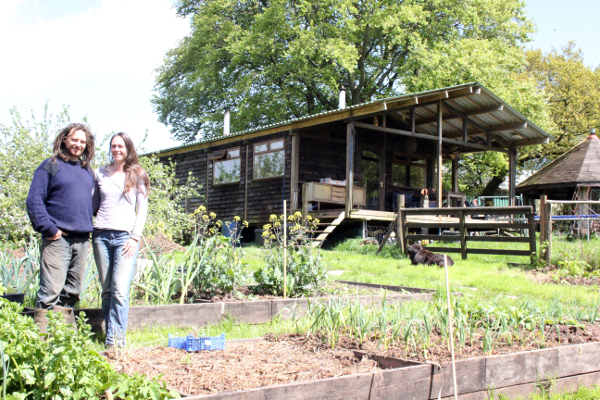

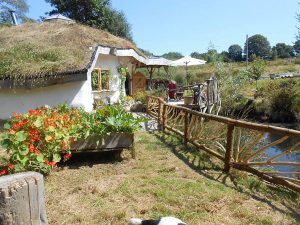
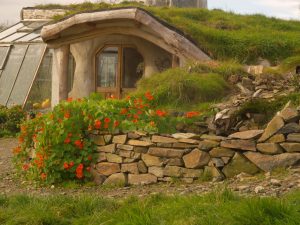
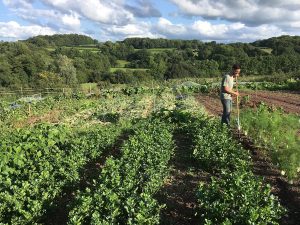
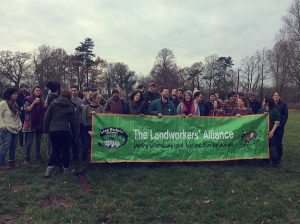


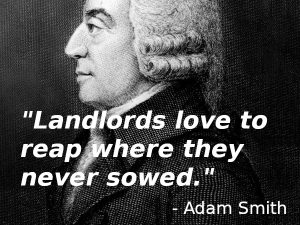



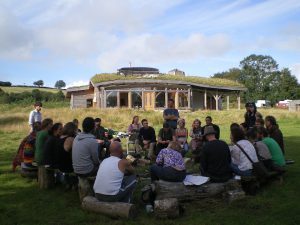


8 Comments
Hi The figure provided of 1.7ha per person seems quite high. My own yard is about 1/500 of a sq kilometre, 0.3acre and may give me as much as 1/20 of my needs. That is far less than 1.7 so it may be generous.
My ecological foot print is very low indeed, with a gross exp of £9000, and a revenue from the yard by comparison of about £1500.(in kind). My fuel bill per annum is about £18/wk and food £25.(flour for bread etc.) Those are my only expenses.
@Gardda. It’s not a hectare but a ‘global hectare’. It doesn’t mean you need a 1.7 hectare to live on. It means that the total amount of land needs to support everything you use and do. Read this paragraph again: Ecological footprint is measured in ‘global hectares’. It divides the ‘biocapacity’ of land (supply) by human consumption levels (demand). The biocapacity is a measure of the pollution land can absorb and the services and resources it can provide. The demand is the population level times the consumption level. The result is an average of hectares per person, if it were distributed equally between everyone alive. A hectare is 2.47 acres or 10,000 square metres or 0.01 square kilometers.
Then do the calculator. That will tell you your ecofootprint. But it does sound nice and small from your description (although I wonder you aren’t missing a few things out… clothes, technology…)
Hi. Any leads to people looking for manual and admin help in setting up, possibly in return for a sharehold or accomodation would be welcome. Thanks.
Hi Clive – post your request on the One Planet Council Facebook page, and you’ll probably get a few replies!
Hello. I’ve nurtured the idea of cooperative living for many years, and in developing /sustaining a community. i have some capital, experience of property renovation social housing, and rural living and im now at a point in life that I’m perhaps having one last look. Any thoughts/suggestions? Thanks PS What wonderful work you do 🙂
Thank you Chris. Where do you want to live in the UK? Wales, England or Scotland or NI? The planning law is different in each place.
Hi David
You have said you run courses on how to do the above. Where can I find out about courses?
Thanks,
Katherine